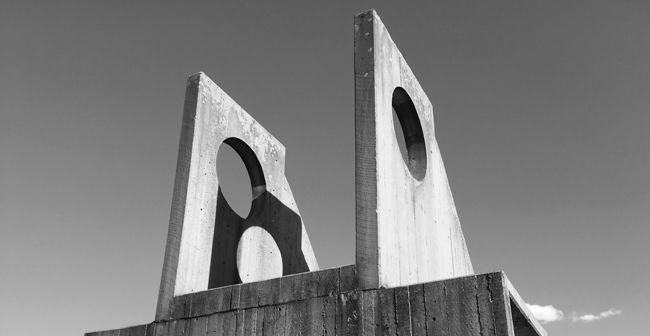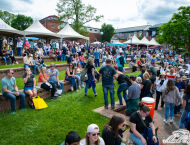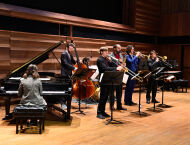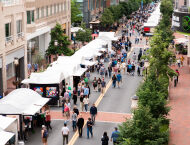Culture
 Photo: Deane Madsen
Photo: Deane Madsen
Brutal Beauties: A Look into DC’s Concrete Architecture
June 30, 2018 @ 12:00am
Architecture in DC is often associated with the neoclassical silhouettes of the White House, the Jefferson Memorial and the Treasury. But what about all the concrete that makes up buildings like the FBI Building, the Department of Housing and Urban Development, or even the Hirshhorn? Enter the architectural style of Brutalism and its resident advocate Deane Madsen, a writer and architectural photographer living in the city. He founded BrutalistDC, an Instagram account and website that document these widely misunderstood structures. We caught up with him about the basics of Brutalism and what makes the style so important to DC’s landscape.
On Tap: How would you define Brutalism?
Deane Madsen: An architectural style that features bold, structurally innovative forms rendered in raw materials. It stems from a 1950s British interpretation of a Swedish moniker crossed with a Swiss/French architect’s specification of béton brut (raw concrete) in social housing. In the U.S., the style emerged later but proliferated due to low cost of materials during an era in which government set about to redefine itself with monumental structures.
OT: Why is Brutalist architecture so important to the architectural landscape of DC?
DM: For one, there’s just so much of it. Look at any satellite image of Southwest DC and you’ll find enormous superblocks of government buildings rendered in concrete: the Department of Energy, the Department of Housing and Urban Development, L’Enfant Plaza. Two, most of it arose during an era of urban renewal in Washington. The Brutalist architecture in the District breaks from the traditions of Neoclassical, Federal and Gothic Revival to present buildings constructed at the height of post-war optimism.
OT: What are some common misconceptions about Brutalism and how do you respond to them?
DM: Probably the biggest misconception about Brutalist buildings is that they’re somehow brutal. I sometimes joke that these buildings are not, in fact, out to kill you – chunks of concrete falling off the FBI Building are the result of neglect, not malice. The other default reaction to Brutalism is that it’s ugly. I get it, not everyone appreciates the aesthetic. And there’s no way I’m going to be able to change someone’s taste, but when I’m giving tours of Brutalist buildings, I encourage people to get up close and examine tactile features such as board-formed concrete.
OT: What led you to create the BrutalistDC Instagram account and website?
DM: Washington has an amazing breadth of architecture, but the city’s government buildings of the 1960s and 1970s – the urban renewal era – are much maligned, and, quite frankly, I was tired of seeing Brutalist buildings top lists of DC’s ugliest. My goal in creating BrutalistDC was to advocate for an underappreciated set of buildings and to show them in ways that highlight their textural beauty.
OT: What are your favorite Brutalist buildings in DC and why?
DM: The Hirshhorn Museum is easily my favorite Brutalist building in DC. The staff of the Hirshhorn understands the value of their museum’s architecture, and works hard to maintain, promote and improve it. A recent lobby renovation stands out as an example of a sensitive addition to an already great space.
Learn more about Brutalist architecture in the District at www.brutalistdc.com and follow BrutalistDC on Instagram at @brutalistdc.







